Let’s all be inspired by the Toluca Lake Elementary PTA mother’s chorus as they rehearse for a performance at an upcoming association meeting in the school’s cafetorium.

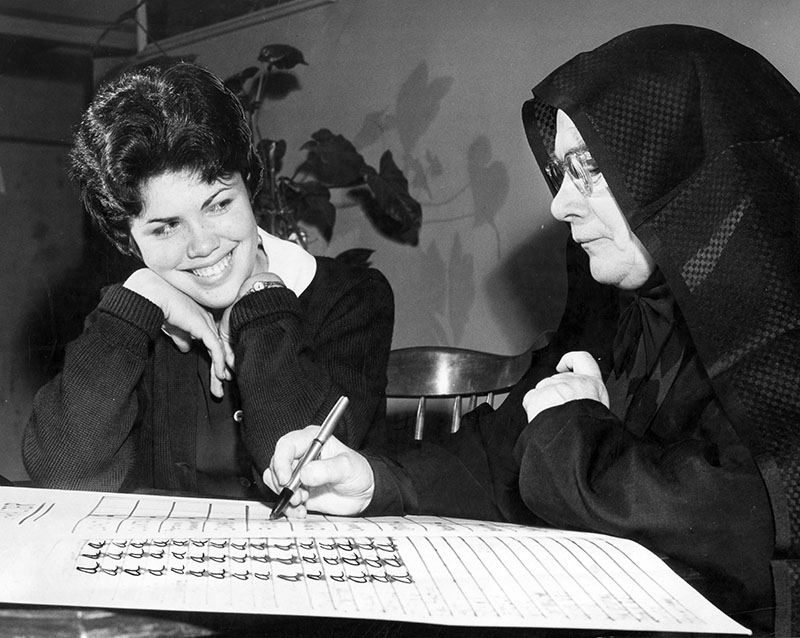
malady
a 15-year-old sophomore at Villa Cabrini Academy with Rev. Mother Eulalia M.S.C. Superior, November 4,1960. Photo by Gordon Dean. Order #00108838″ width=”800″ height=”638″ /> Joan Feeney, a 15-year-old sophomore at Villa Cabrini Academy with Rev. Mother Eulalia M.S.C. Superior, November 4,1960. Photo by Gordon Dean. Order #00108838The Villa Cabrini Academy was a private, Catholic school for girls nestled in the Verdugo foothills in Burbank at 7500 Glenoaks Boulevard. The school was founded by Mother Francis Xavier Cabrini, who was the first naturalized US citizen to be canonized by the Catholic Church. Throughout the late nineteenth and early twentieth century, Mother Cabrini established hospitals, orphanages and schools in both her native Italy and in many American cities, including the Regina Coeli Orphanage in downtown Los Angeles. In 1907, she and the Sisters of the Sacred Heart Order built a preventorium on the Burbank property for children with tuberculosis. After Mother Cabrini’s death in 1917, the Sisters continued to develop the site, creating a boarding school and a summer retreat for orphans during the depression era. The Academy was built in 1944, which expanded into an elementary and secondary school with 22 buildings on a 30- acre campus.
Below are recently digitized images of Villa Cabrini school life in the 1950s and 60s.
The Villa Cabrini Academy closed in 1970 due to lack of religious personnel to maintain the school. After the closure, California Institute of the Arts rented the facilities as an interim campus before moving to Valencia. The following year, half of the school’s buildings were demolished after they were damaged in the San Fernando earthquake. The school site alternated between vacancy and neglect, and occupation by a series of tenants, including the City of Health, the Chiropractic Associated Practices Foundation, and the Lutheran High School of Los Angeles. The former academy is now home to Woodbury University, which purchased the property in 1987. Two of the original structures from Villa Cabrini remain. The main chapel was converted to Woodbury’s library. A smaller chapel built by Mother Cabrini in 1917 that became pilgrimage site for members of the Italian American community, was moved to St Francis Xavier Church located at 3801 Scott Avenue in Burbank.
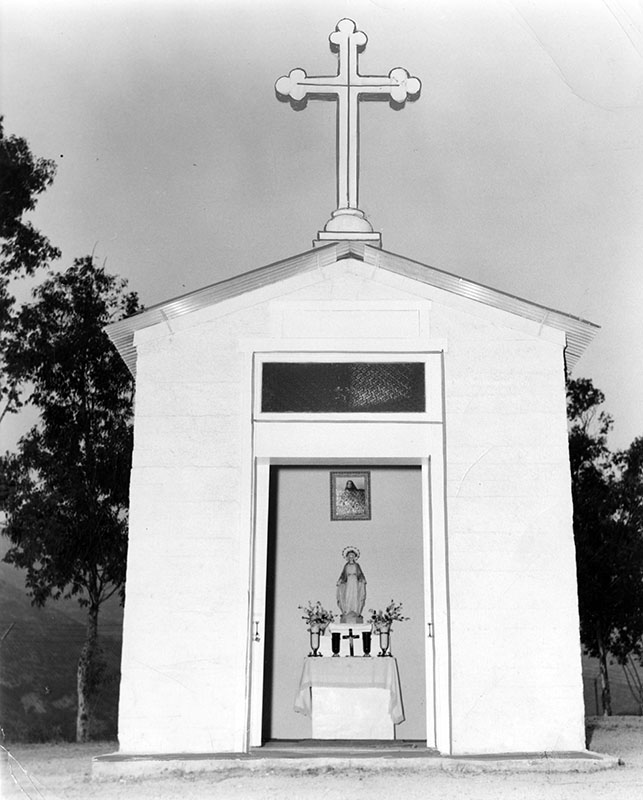
Closeup of the small chapel built in 1917 at direction of St. Frances Xavier Cabrini, then Mother Cabrini, January 31, 1955. Order #00108832
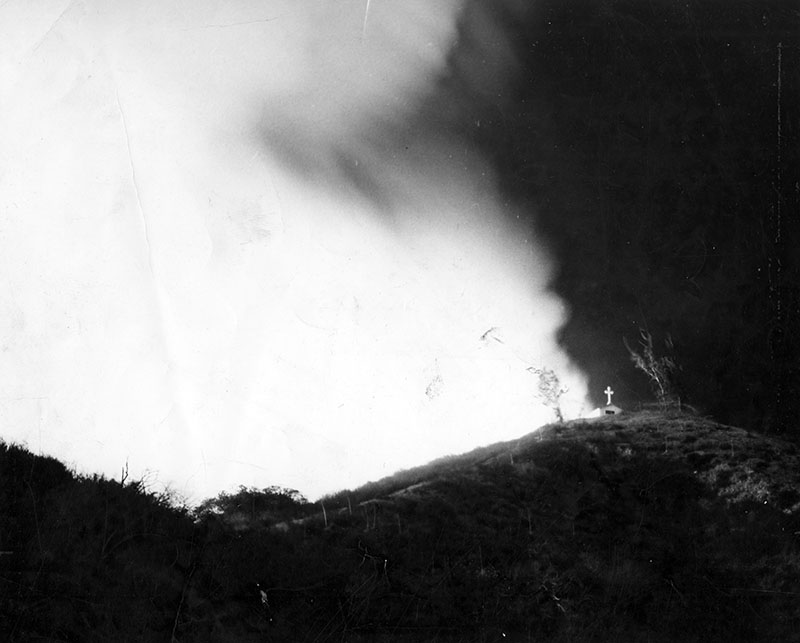
Photograph caption dated December 5, 1958 reads, “Picture taken during fierce 1955 fire in Burbank foothills shows how close brush blaze came to tiny Burbank chapel.” Order #00108833
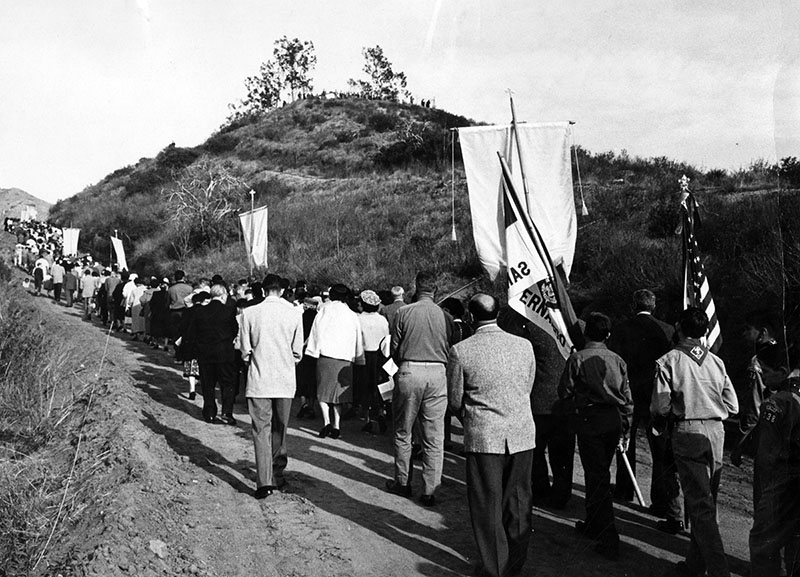
Photo by Jon Woods, December 5, 1960 caption reads, “More than 5,000 faithful climb hill in Burbank in annual pilgrimage to shrine of St. Frances Xavier Cabrini at Villa Cabrini Academy, 7500 Glenoaks Blvd., Burbank. Shrine was built at spot where St. Cabrini meditated prior to her death in 1917. She was canonized in 1946. Pilgrimage was sponsored by the Italian Catholic Federation.” Order #00108834
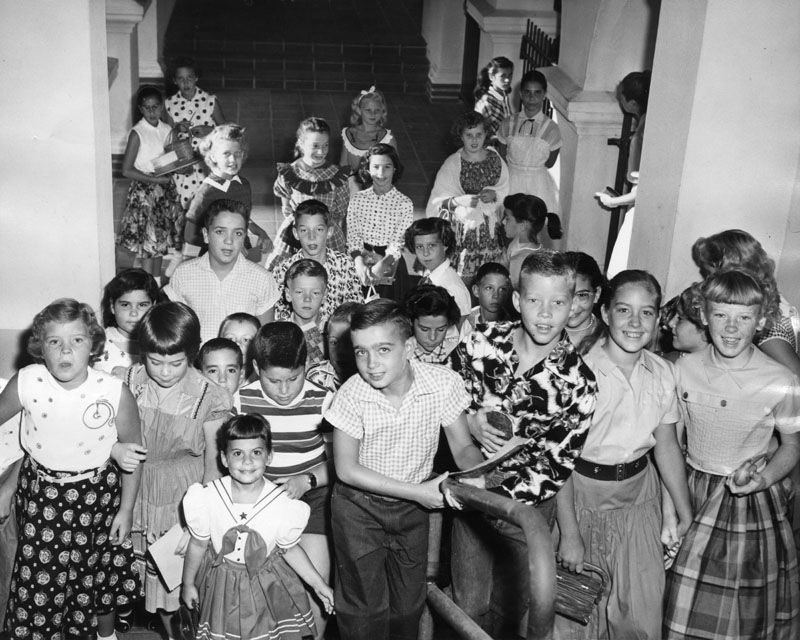
cialis
Sept. 12, 1955. #00031295″ width=”800″ height=”640″ /> Students rush up steps at Lankershim Elementary School in North Hollywood, Sept. 12, 1955. #00031295The post war population boom in the San Fernando Valley meant that schools were needed to accommodate the growing number of children and teenagers. These are a sample of images recently added to the online collection that show the development of Valley schools and the kids who filled the classrooms.
Here are some recently digitized photos of California Lutheran College in Thousand Oaks—the first private college to open in the Valley— by staff photographer George Brich. The series from August 21, 1961 shows some features of the new campus before the first students began classes on September 11.
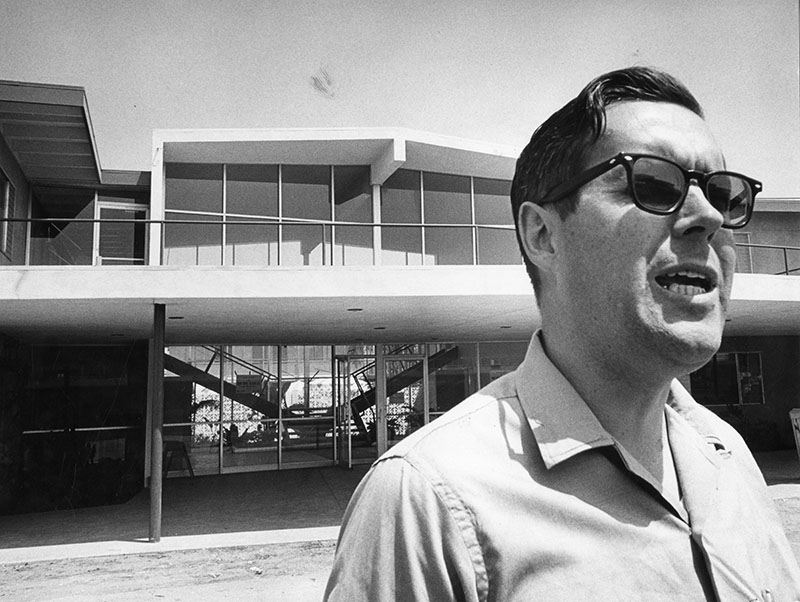
Robert Gronlund, assistant to the president, in front of one of the two apartment-styled student dormitories on the new California Lutheran College’s Thousand Oaks campus. Order #00111822
“‘May I have your attention please,’ said the musical voice of the tour guide from the front of the tram. ‘My name is Judy Marquette, she said, ‘and we’re going to take you on a tour of Universal City.'”
On August 19, 1964, Valley Times staff writer Vic Pollard and staff photographer Steve Young covered the recent promotion of the Universal Studios tram tours, which offered visitors from all over the United States a look at the studio’s back lot. Pollard and Young rode along with 65 tourists in the coral and white, three-car tram to get a behind the scenes view of motion picture and television production.
Five guided tours were offered to typically 350 visitors per day. Photography was encouraged. Special sets from popular TV shows were on display, accompanied by signs listing the correct camera settings so guests could be sure to get a good picture. All for the admission price of $2.50 for adults and $1.25 for children!
The women of the San Fernando Valley are the focus of the current exhibition from the Photo Collection in the Central Library’s History & Genealogy Department. Defining Their Indentity – The Changing Roles of Woman in the Post-War Era as Documented by the Valley Times Newspaper features the diversity of women’s lives in the home, the workplace, and the community during the years of suburban growth and social changes from 1946 -1965.
There is also a exhibition catalog available through Amazon and the Library Book Store. Former Los Angeles City Council member, Joy Picus (the first woman to represent the San Fernando Valley on the City Council) wrote the introduction.
 Here’s Joy speaking at the opening reception July 15, 2014.
Here’s Joy speaking at the opening reception July 15, 2014.
The exhibition is definitely worth a look and will be up until January 3, 2015.
Today in Valley History… Gags spark neighborhood fun
This photo by George Brich ran July 29, 1960 with the caption: Coming home to find Christmas lights strung all over the house isn’t unusual for certain Granada Hills neighborhood which thrives on practical jokes. Here, Mrs. Betty Williams, right background, enlists aid of neighbors Mrs. Larry Wallen and Dick Strahm to help her undo latest gag pulled on them in retaliation against gag they pulled in retaliation against gag – et cetera, et cetera, et cetera.
“Christmas in July” was also a popular theme for social and civic events, as seen in this photo from July 16, 1959.
Mmes. H. J. Matchett, Ray Thelan, Warren Boughton and Harold Hennessy (from left) prepare for the annual “Christimas in July” fundraising activity sponsored by the Encino Republican Women’s Club, which featured booths selling white elephant and Christmas trinkets.
Summer is officially here! Let’s take a look at some images showing how Valleyites beat the heat by taking a dip in the pool.
According to the caption in this photo, in 1961 there were 24,835 pools in the San Fernando Valley, with approximately 4,000 being added each year.
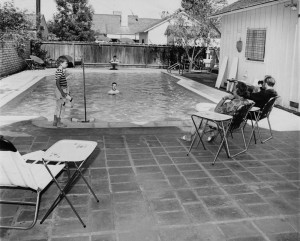
Photograph caption dated September 30, 1961 reads, “Typical of the relaxed outdoor living in the San Fernando Valley is this scene around the backyard swimming pool. Children enjoy the fun under watchful eye of grownups. Thousands of these relaxation spots dot the Valley and more are being built each year.” Order# 00082908
The entertainment section of the Valley Times featured a story on October 30, 1963 covering a tour of the back lot of Universal Pictures where many classic movies like “Psycho”, “All Quiet on the Western Front” and “Sparticus” were filmed. The photos were shot by staff photographer Gordon Dean.
This is an aerial view of the 300 – acre lot bordered by the Los Angeles river, Barham Boulevard and the Hollywood Freeway. The panorama is a composite of four images:
[slideshow_deploy id=’226′]
Here’s a closer look at some of the sets that served as backgrounds for some of Universal’s classic films and television shows.
The Valley Times often featured stories about the paper’s operations and staff. Here are some images from a photo essay that ran on July 19, 1960 showing how the Valley Times covered the Democratic National Convention in Los Angeles.
“In the news room – This is a section in the newsroom of the main office of the Valley Times [which was located at 11109 Magnolia Boulevard, North Hollywood] where convention news was prepared for the day’s editions. Copy arrived in an unending stream from all the sources of this newspaper shown on this page, supplemented by Associated Press, United Press International and City News Service. Executive editor Jackson Berger, standing at left, checks stories with managing editor Almer Isackson, seated. City editor Ade Banks, right, processes stories from staff members, which are handed to John Hoggatt, news editor, second from right, for layout on convention pages.”
Meanwhile at the Los Angeles Sports Arena…
“Lady Bird ‘sings’ – Valley Times reporter Dave Holland interviews Lady Bird Johnson, wife of Democratic vice presidential nominee, Sen. Lyndon B. Johnson, for personal story of the wife of one of the major contending candidates.”
“Valley Times staff writer Joyce Lambeau takes time out from her duties as convention Golden Girl hostess to buttonhole Sam Rayburn, speaker of the House, and quiz him on his candidate, Texas Sen. Lyndon B. Johnson.”
“Valley Times reporter Jack Langguth, center, questions colorful Michigan Gov. G. Mennen ‘Soapy’ Williams on his ideas of Democratic convention progress. Photographer George Brich, left, records scene on film. Michigan governor led anti-Lyndon Johnson movement.”
“Gordon Dean, right, chief Valley Times photographer, checks camera with photographer Jon Woods to make sure equipment is ready for fast-breaking story on convention floor.”
“Political writer John McDonald pounds out analysis of convention news. Besides complete news coverage and colorful sidelights, Valley Times featured interpretations of important events.”
“Marr McGaffin, of the Valley Times convention bureau, makes final check on his story before teletype operator Vonna Bairston transmits story out of bureau at convention headquarters, transmitting news immediately after it broke.”
To view more from this series and the Valley Times, visit the Photo Collection at lapl.org